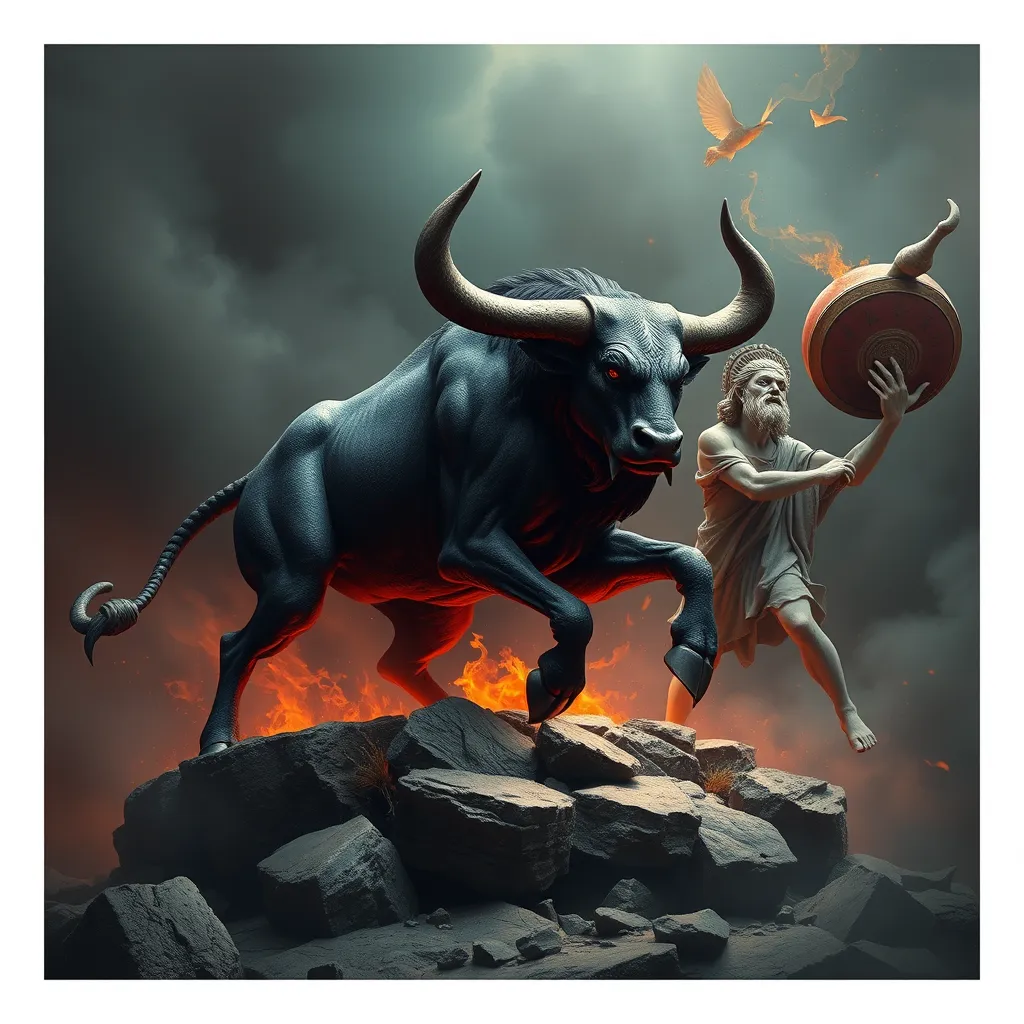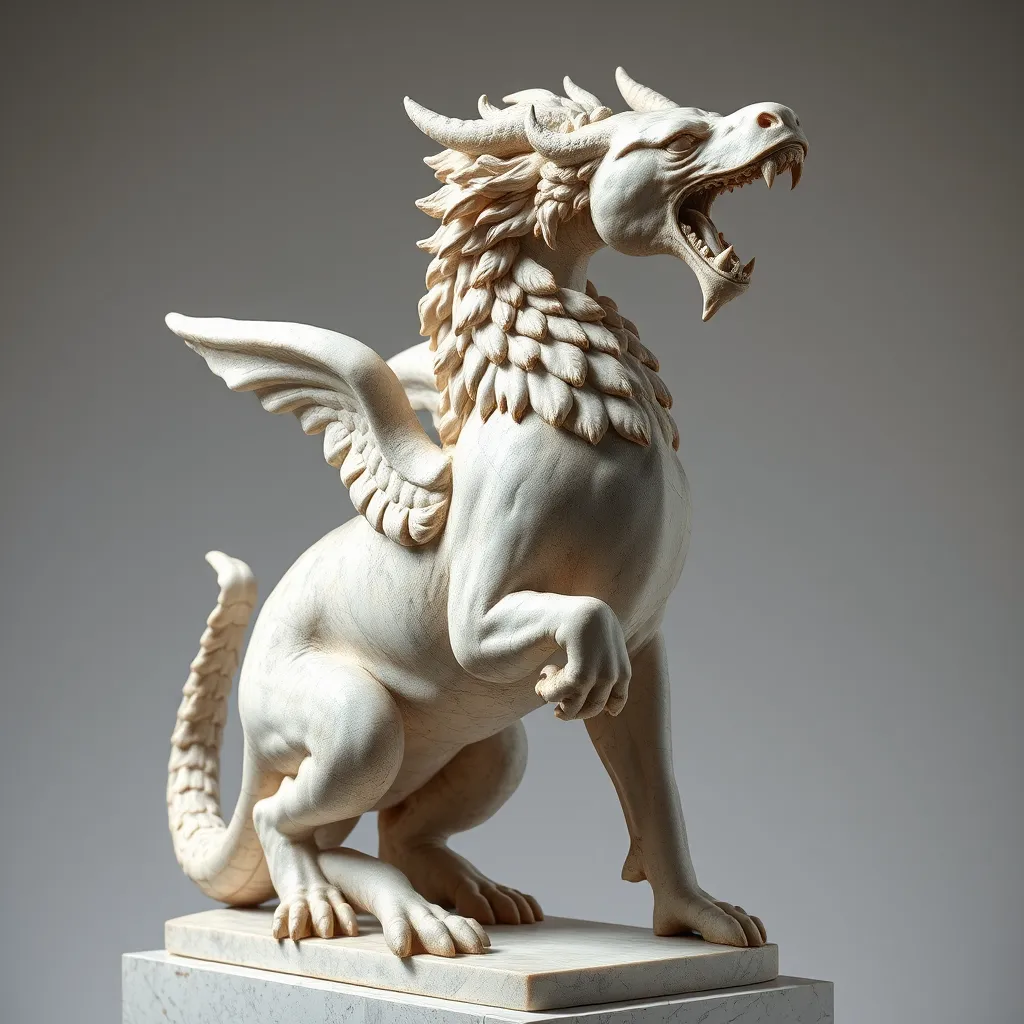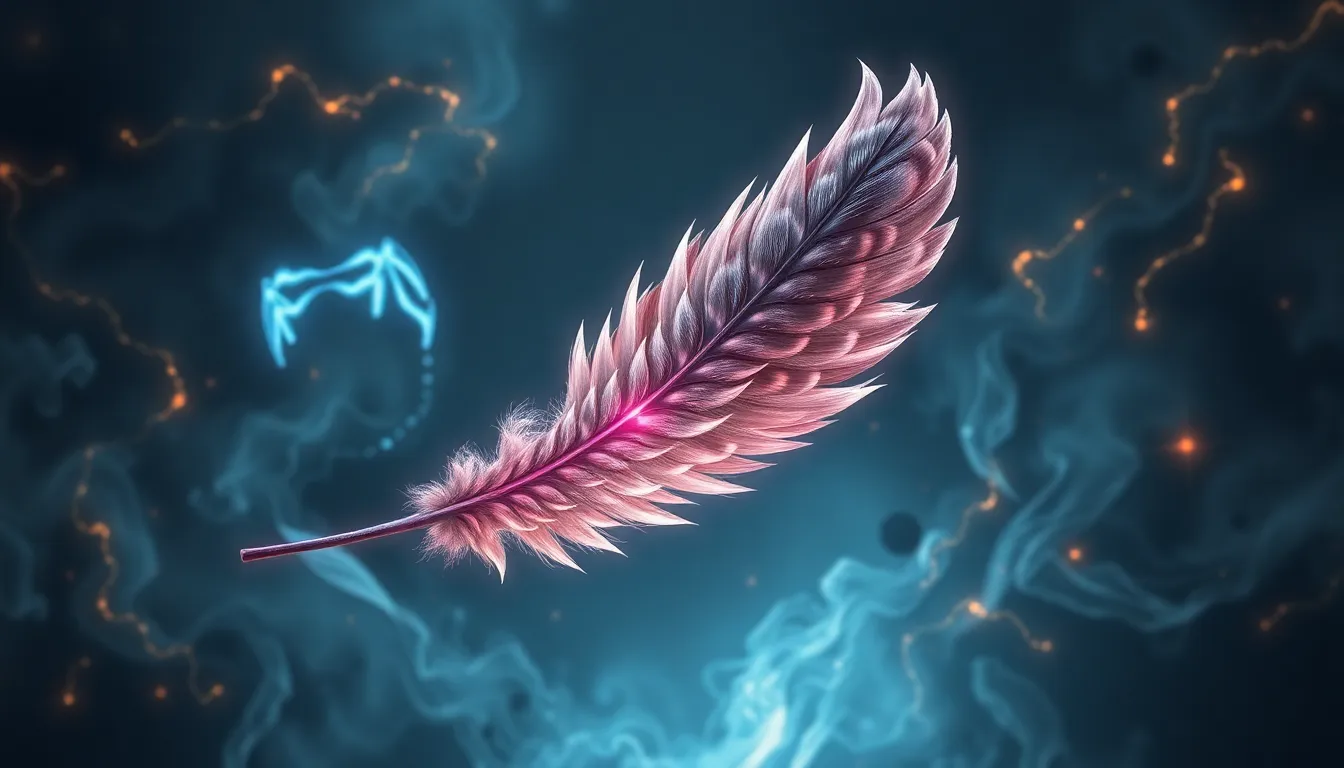The Minotaur and the Gods: Exploring the Monster’s Relationship with the Olympian Pantheon
I. Introduction
The Minotaur, a creature with the body of a man and the head of a bull, is one of the most enduring figures in Greek mythology. His story intertwines with the gods of Olympus, revealing a complex relationship that reflects the themes of divine influence, punishment, and sacrifice. The significance of the Minotaur’s existence lies in the interplay between human folly and the will of the gods, making him a symbol of the consequences that arise from divine meddling and human action. This article aims to explore the multifaceted relationship between the Minotaur and the Olympian pantheon, shedding light on his origins, his connections with various gods, and the implications of his legacy.
II. The Origins of the Minotaur
The Minotaur’s origins are steeped in tragedy and divine retribution. His birth can be traced back to a curse placed on Pasiphaë, the wife of King Minos of Crete. This curse was a direct consequence of Minos’ failure to sacrifice a magnificent bull to Poseidon, the god of the sea. In revenge, Poseidon made Pasiphaë fall in love with the bull, leading to the unnatural union that produced the Minotaur.
A. Birth of the Minotaur: The curse of Pasiphaë
- Pasiphaë’s infatuation with the bull resulted in the Minotaur’s conception.
- The Minotaur was born as a monstrous hybrid, symbolizing the failure of Minos to adhere to divine expectations.
B. The role of Poseidon in the Minotaur’s conception
- Poseidon’s role was crucial as he instigated the events leading to the Minotaur’s birth.
- The bull, originally a gift to Minos, became a tool of vengeance against him.
C. Symbolism of the Minotaur’s hybrid nature
The hybrid nature of the Minotaur serves as a powerful symbol of the chaos that ensues when divine will intersects with human failure. The creature embodies the consequences of disregarding the gods’ wishes and highlights the fragile balance between humanity and divinity.
III. The Labyrinth: A Divine Creation
To contain the Minotaur, King Minos commissioned Daedalus, a master craftsman, to build the Labyrinth—a complex maze that would prevent the creature from escaping and wreaking havoc on Crete.
A. The design of the Labyrinth by Daedalus
- Daedalus’ ingenuity was reflected in the Labyrinth’s intricate design.
- The Labyrinth itself became a symbol of entrapment and confusion.
B. Minos’ connection with the gods and his role as a king
Minos’ relationship with the gods was significant; he was often seen as a judge of the dead and a ruler who enforced divine law on earth. His connection to the gods reinforced his authority, yet it also placed him in a precarious position where his failures had dire consequences.
C. The Labyrinth as a metaphor for divine punishment and human folly
The Labyrinth represents the consequences of Minos’ and Pasiphaë’s actions—a divine punishment for their transgressions. It serves as a physical manifestation of the chaos that arises when humans attempt to navigate their fates without regard for divine will.
IV. The Minotaur and Sacrifice
The Minotaur’s existence was marked by cycles of sacrifice, reflecting the harsh realities of divine retribution and the fragility of human life under the gods’ influence.
A. The tribute of Athenian youths to the Minotaur
- As a punishment for the death of Minos’ son, Androgeus, Athens was forced to send seven youths and seven maidens every nine years to be sacrificed to the Minotaur.
- This tribute exemplified the brutal nature of divine justice and the impact of the gods on mortal lives.
B. The role of the gods in the cycles of sacrifice
The gods orchestrated the tribute as a means to exert control over mortals, demonstrating their power and the consequences of human actions. The Minotaur, as the recipient of these sacrifices, became a chilling reminder of the gods’ whims.
C. The Minotaur as a reflection of the consequences of divine will
The Minotaur’s existence and the sacrifices made to him highlight the stark reality of living under the influence of capricious deities. His role as a monster is not just a product of his own nature but a reflection of the divine will that created him.
V. Theseus and the Divine Intervention
The story of Theseus introduces a heroic element to the Minotaur’s narrative, showcasing the interplay between divine favor and human courage.
A. The role of Ariadne and her connection to the gods
- Ariadne, the daughter of Minos, played a pivotal role in Theseus’ quest by providing him with a ball of thread to navigate the Labyrinth.
- Her assistance can be seen as a form of divine intervention, as she was influenced by the gods in her decision to help the hero.
B. Theseus as a hero favored by Athena
Theseus’ journey to confront the Minotaur was marked by the favor of Athena, the goddess of wisdom and warfare. This divine support was crucial for his success against the beast.
C. The significance of divine assistance in overcoming the Minotaur
The victory of Theseus over the Minotaur is not merely a tale of heroism but also a testament to the necessity of divine favor in achieving great feats. The gods’ involvement underscores the belief that mortals must have the support of the divine to succeed against seemingly insurmountable odds.
VI. The Minotaur’s Legacy and Transformation
The defeat of the Minotaur carries substantial implications for both the gods and mortals in Greek mythology.
A. The Minotaur’s defeat: Implications for the gods and mortals
- Theseus’ victory signifies a shift in power dynamics between mortals and the gods.
- The Minotaur’s death represents the triumph of order over chaos, a recurring theme in mythology.
B. The evolution of the Minotaur in later mythology and culture
In later interpretations, the Minotaur has been reimagined in various forms, often representing the struggle between civilization and savagery, as well as the inner conflicts faced by individuals.
C. The Minotaur as a symbol of chaos versus order in the divine realm
The Minotaur embodies the chaotic aspects of existence that challenge the established order upheld by the gods. His defeat serves as a reminder of the constant struggle between these two forces in both mythology and human experience.
VII. The Minotaur in Modern Interpretations
Contemporary adaptations of the Minotaur’s story continue to resonate with audiences, reflecting ongoing societal issues and personal struggles.
A. Contemporary adaptations in literature and art
- The Minotaur has appeared in various forms of art, literature, and film, often exploring themes of identity, monstrosity, and the human condition.
- Modern reimaginings frequently emphasize psychological elements, portraying the Minotaur as a metaphor for inner demons.
B. The Minotaur as a metaphor for inner struggles and societal issues
In contemporary narratives, the Minotaur often symbolizes the darker aspects of humanity, such as fear, rage, and isolation, making him a relatable figure in a world filled with chaos.
C. Ongoing relevance of the Minotaur’s story in relation to the gods
The Minotaur’s tale serves as a timeless reminder of the complexities of the human experience and the enduring influence of divine forces in our lives. It challenges us to reflect on our relationships with authority, identity, and morality.
VIII. Conclusion
The Minotaur’s relationship with the Olympian gods is a complex tapestry woven from themes of punishment, sacrifice, and heroism. His story illustrates the profound impact of divine influence on human lives and the often tragic consequences of defiance against the gods. The enduring legacy of the Minotaur in myth and culture invites us to contemplate



